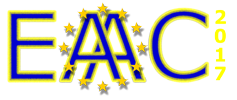Speaker
Mr
Rozario Savio
(Imperial College London)
Description
Intense laser pulses (I0^18 W/cm^2) are routinely used to generate electron beams in plasmas using laser wakefield accelerators (LWFAs). It additionally provides a useful source of radiation which is suitable for many imaging applications. Significant research in LWFAs is aimed towards investigating new injection mechanisms which improve the stability of these electron beams/radiation sources to increase their applicability to industry.
A heterogenous plasma consists of monomers and clustered gas which provide a testbed for a new injection mechanism involving clusters. Clusters are a collection of atoms ranging from a few 100’s to 1e7 atoms which are held together by the Van-der-Waals force. They act as a large source of electrons which can be injected and trapped by plasma wave . Clusters are know to have an additional self-focusing effect on the laser pulse and thus provide a mechanism to extend the guiding of laser pulses. Experiments performed on the Gemini laser (TA2/TA3) are presented and the properties of such a source, such as electron beam charge, stability and energy are compared to more common injection mechanisms such as self-injection and ionisation injection.
Primary authors
Elias Gerstmayr
(Imperial College London)
Dr
Jason Cole
(Imperial College London)
Dr
Jonathan Wood
(Imperial College London)
Dr
Kristjan Poder
(DESY)
Rajeev Pattathil
(Central Laser Facility,)
Mr
Rozario Savio
(Imperial College London)
Zulfikar Najmudin
(Imperial College London)

